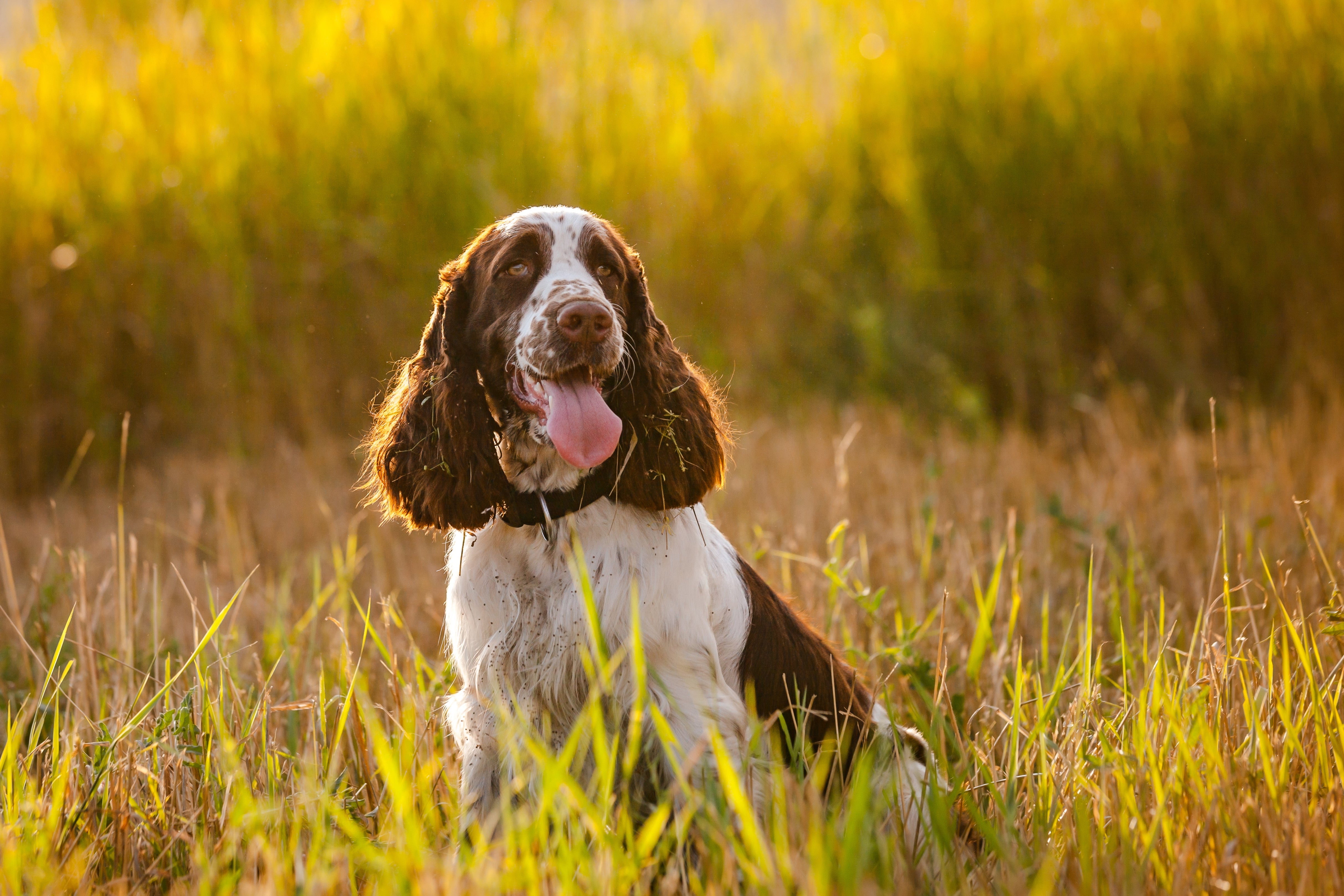English Springer Spaniel
English Springer Spaniels are a spritely species—walking tall with a proud disposition and their head held high. They are slightly longer than they are tall and their build shows off their agility and strength. With lush, long ears and a sweet, trusting expression, these brainiacs are well-mannered and have a deep affection for their owners.
Breed characteristics carousel
Learn More
Need to Know
- Suitable for owners with some experience
- Extra training required
- Enjoys vigorous walks
- Can be left alone occasionally with training
- Medium dog
- Some drool
- Requires frequent grooming
- Chatty and vocal dog
- Barks and alerts to visitors/anything unusual
- Generally friendly with other dogs
- Fets along with other pets with training
- May need additional supervision to live with children
- Needs a large yard, either in suburban or rural areas
- AKC Registered Breed

Personality
English Springer Spaniels are the straight-A students of the dog world. They’re busy dogs who are intelligent, quick-witted extroverts who aim to please. They are well-mannered and friendly. The English Springer Spaniel breed was developed to be around people so they thrive on human attention and company. As a result, they make excellent family pets who will want to join in on all the family fun. They are active and do well with equally active families. English Springer Spaniels will never be able to turn down an opportunity to play, find items, and carry objects in their mouth, so fetch is truly just the beginning!
The Spaniel dates back to the late 1500s and started making a name for themselves shortly after the rifle's invention in the 17th century when they quickly became renowned as eager and reliable gundogs.
Initially, English and Welsh Springers were assumed to be the same breed—even exhibited together at British dog shows until 1902, when they were separately recognized. English Springers soon made their way to America where they were also beloved for their hardworking demeanor. Today, this dog can be found running around in backyards or working in K-9 detection thanks to their keen nose.
Ideal owners are active, outdoorsy, and are looking for a companion to go everywhere with them. Springers do relax at the end of the day, but they need walks, ample play time, runs, and more to feel like they have earned the downtime. Someone who is mud-tolerant or does not mind grooming is also recommended.
This is an energetic breed who loves the outdoors and has plenty of stamina for work and play. English Springer Spaniel dogs need a vigorous amount of mental and physical exercise. They do best when they are given a purpose. Interacting with them is crucial: playing scent and retrieving games, running, going for long walks, etc. should all be daily activities.
English Springer Spaniels don’t necessarily need a large indoor space, but they require a good amount of outdoor space to play and roam. They are happiest when they are in rural areas, roaming for miles—especially if they can get muddy.
The English Springer Spaniel’s coat is flat and wavy with feathering around the legs, tail, chest, undercarriage, and ears. Trimming around these areas will be required. They will need bathing and additional grooming after a long day of play as their coats and feet can pick up twigs, grass, and all kinds of debris outside.
Early training classes and socialization are important to ensure the Springer Spaniel puppy grows into a well-mannered adult. Due to their energetic nature, continued training is highly encouraged. These dogs can also develop poor behaviors and manners if left alone for too long.
Springer Spaniel dogs are friendly, affectionate creatures who are ideal for an outdoorsy, active family—bonus points if you live in rainy, rural areas and don’t mind getting out with them in inclement weather. They can still make great pets for less active families, but extra effort will be required to ensure they get the daily exercise they need which is essential.
The cost of an English Springer Spaniel from a breeder is significantly more than the cost of adopting one from a local shelter or rescue. The adoption fee usually covers additional items such as spaying or neutering, vaccines, and microchipping.
Adopting an English Springer Spaniel dog or puppy
Interested in adopting an English Springer Spaniel dog or puppy? Here are answers to some common questions about bringing one of these charming dogs home.
These dogs shed moderately throughout the year, possibly more during the spring and fall months.
The Springer Spaniel breed can never resist a good cuddle. It’s one of their favorite activities, especially with their owners and family.

Learn more about feeding and caring for your English Springer Spaniel on Purina.
Did You Know?
- Springer and Cocker Spaniels used to be considered the same breed. Larger puppies were the Springers and the smaller were the Cockers. They were first recognized as two different breeds in the late 1800s.
- Springer Spaniels love water, whether that be swimming or just playing with their water bowl.
- The Springer Spaniel dog breed has been found in paintings as far back as the 16th century.
- George W. Bush, Princess Grace, and Oprah Winfrey are just some of the many admirers of this sweet, loveable breed.

